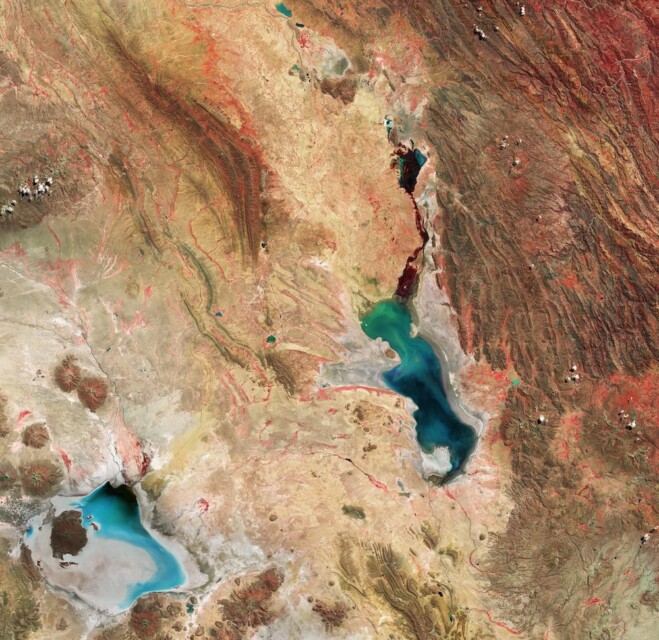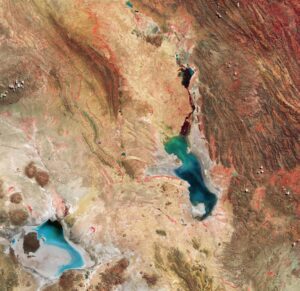
 This Copernicus Sentinel-2 image features salt flats and lakes in southwest Bolivia, near the crest of the Andes Mountains. Acquired in April 2024, this false-color image shows part of the Oruro Department toward the southern end of the Altiplano, a high plain that stretches almost 1,000 kilometers from Peru to Bolivia.
This Copernicus Sentinel-2 image features salt flats and lakes in southwest Bolivia, near the crest of the Andes Mountains. Acquired in April 2024, this false-color image shows part of the Oruro Department toward the southern end of the Altiplano, a high plain that stretches almost 1,000 kilometers from Peru to Bolivia.
The image was processed using the near-infrared channel which highlights vegetation in red. As seen in the image, this part of the Altiplano is mostly arid with saline soils.
Some 40,000 years ago, this area was part of a giant lake that dried up, leaving behind two salt flats: Uyuni (not pictured) and Coipasa, visible in grey and light blue in the bottom-left corner. It also left behind two lakes: Poopó, the larger water body near the center of the image, and Uru Uru, just above Poopó.
Lake Poopó is a saline lake and covers approximately 11,000 square kilometers. It’s an endorheic basin, which means water is lost through evaporation.
However, the lake’s shallow nature, with an average depth of just 3 meters, has made its water level very sensitive to fluctuations. This is clear to see in the image, as part of the lakebed surrounding the water appears gray and dry. In the last decades, the lake has fully evaporated on some occasions, with catastrophic consequences for the region’s flora and fauna and for the economy.
The lake’s main tributary, the Desaguadero River, is visible north of the lake, dying its blue waters in different hues of green.
North of Poopó, the Uru Uru Lake’s mostly red surface indicates the presence of vegetation populating its shallow waters.
Image Credit: Contains modified Copernicus Sentinel data (2024), processed by ESA
There are no upcoming events.
